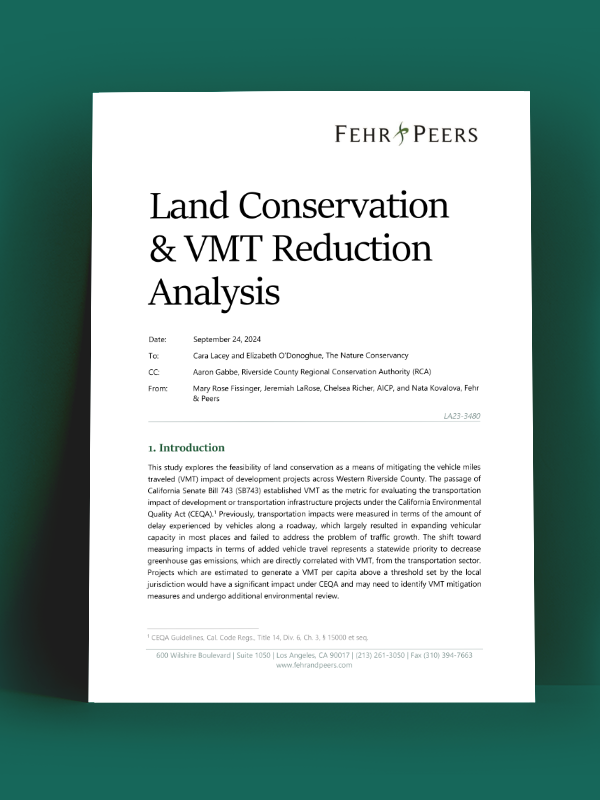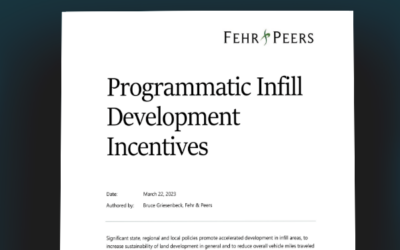Land Conservation and VMT Reduction Analysis
Land Conservation and VMT Reduction Analysis
Policies targeted at reducing Vehicle Miles Traveled (VMT) can be a powerful tool for advancing sustainable land development patterns. Our new white paper explores how VMT mitigation programs could protect biodiversity, preserve critical habitats, and support land conservation.
We recently worked with the Western Riverside County Regional Conservation Authority (RCA) and The Nature Conservancy to explore how VMT credits could be leveraged to fund conservation efforts, aligning transportation and conservation goals. By converting high-VMT parcels into conservation areas and instead encouraging development in lower-VMT areas, this approach helps combat sprawl while achieving long-term environmental benefits.
Read the full white paper to learn more about this innovative strategy, and contact us to explore how it could apply to your projects.
share this article
Contributors
Chelsea Richer
Climate & Resilience Discipline Leader
AICP
Email Me
Mary Rose Fissinger
Senior Engineer/Planner
Email Me
Jeremiah LaRose
Senior Associate
Email Me
Nata Kovalova
Engineer/Planner
Email Me
Explore More
Reclaiming a Concrete Desert
Learn how the once-touted largest single surface parking lot, now known as SDSU Mission Valley, is being reimagined. The new design is all about reducing the need for cars, improving mobility, and creating a vibrant, walkable, and bikeable environment for the local community to enjoy.
Priced Out
This white paper explores how housing subsidies can reduce driving by helping lower-income workers move closer to jobs and transit, improving access and cutting commute distances.
Programmatic Infill Development Incentives
This white paper discusses the role of state and regional programs like REAP, SACOG’s Green Means Go, and MTC’s Priority Development Areas in supporting infill projects.








